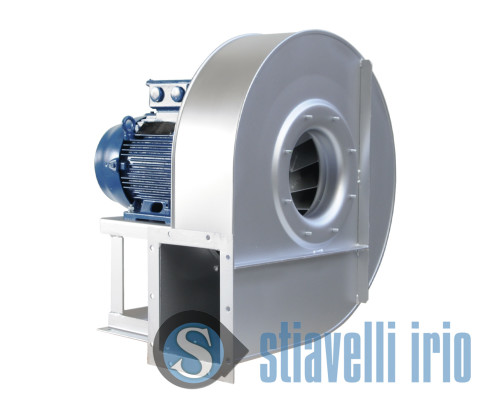Production cycles in the glass industry are varied and include a range of applications mainly determined by the processes and by the end product. From the selection of raw materials and recycling, through the melting and moulding stages, to tempering, different processes and production methods are implemented.
Glass casting and mould cooling. Gas-fired furnaces require a continuous supply of combustion air for the furnace’s kiln during moulding. Industrial fans and blowers are employed for the combustion process and they handle room-temperature air, creating a positive pressure for the burner (kiln). Furnaces are necessary for the manufacturing process of glass bottles, jars for oil, wine and spirits bottles and food vases that require a proper cooling after their production. Treatments as tempering or decorating in lehrs need proper cooling solutions.
Glass tempering. After a thermal heating (furnace), the glass is tempered through a quick cooling. The quantity and the required air pressure depend on the thickness. Industrial fans and blowers for glass tempering provide a specific cold air flow uniformly blown to cool and temper float or curved glass, after high temperature exposition in the furnace. It is specific for safety glass that, if broken, does not shatter. It is also used for windows, doors, pastry and ice cream shops, showers, furniture and more.
Pneumatic conveying, charging of raw materials and vacuum systems are other possible applications. Ambient air cleaning, exhaust and fume extraction systems are typical applications of industrial fans.
Efficiency
Compliance with ERP 2015 Directive 2009/125/EC for setting of Ecodesign Requirements for Energy Related Products.
Materials
Standard: Carbon Steel S 235 JR. Upgraded to Stainless Steel AISI 304, AISI 316, or the most suitable material or alloy for the application.
HIGH TEMPERATURE
Industrial fans structured for high temperature fluids. Specific arrangements, Cooling Devices and options. Heat Insulation.












